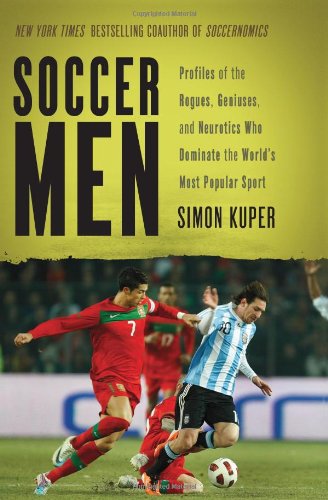
In 2009, journalist Simon Kuper drew wide attention with the publication of Soccernomics, co-written with economist Stefan Szymanski, which explored the ways statistical analysis could explain the odd phenomena of the beautiful game. His timing was impeccable: In the last few years, as companies like Opta have refined their ability to extract quantifiable information from soccer’s fluid choreography, the world’s top clubs have turned to statisticians to help edge out the competition. North London’s Arsenal manager Arsène Wenger is a pioneer of this strategy, and Italy’s AC Milan deploys it in the training room to ensure players’ career longevity. American businessman John W. Henry—who used stats-based analysis to great effect as owner of Boston Red Sox—recently purchased Liverpool, embarking on a targeted spending campaign aimed at bringing in players who fill specific statistical roles, upending conventional wisdom about big-name buying. ESPN pundit David Hirshey has joked that the club fields “10 midfielders and a keeper,” but Liverpool’s manager Kenny Dalglish now has the freedom to rotate his players to counter each opponent’s particular strengths. Watching this new approach unfold is one of this season’s most fascinating English football storylines.
Soccer Men, Kuper’s new collection of profiles, suggests that he favors parsing data to sketching personalities. These short essays on players and managers, originally published in newspapers and soccer magazines from 1997 to the present, are somewhat soured by Kuper’s apparent disdain for many of the players’ off-field intelligence. “I do believe that you can access truths about the game by speaking to Arsène Wenger,” Kuper writes in the introduction. “I don’t believe you can access them by speaking to [Manchester United striker] Wayne Rooney.” The main problem with the book, then, is that Kuper profiles more of the game’s Rooneys than its Wengers. However Kuper is particularly insightful about players such as Liverpool winger Dirk Kuyt, and Manchester United goalkeeper Edwin van der Sar who hail from the Netherlands (where Kuper grew up), folding personal remembrances and observations of the landscape and culture into his analysis of the players’ talent and character. And some of the profiles, such as his portrait of 2006 FIFA World Player of the Year Fabio Cannavaro, are truly insightful, picking up not only on Cannavaro love of defending, but also nuances like his penchant for muscling a striker onto his weaker foot and away from goal.
Kuper’s admiring portraits of an earlier generation of great talkers—from “Total Football” proponent Johann Cruijff to 1990 World Cup winner Lothar Matthaüs to Real Madrid legend Jorge Valdano—reveal that his irritation with today’s players is due as much to broader developments in the game as it is to their individual traits. In his account, soccer stars have become just company men: Chelsea winger Florent Malouda is one of many players who “erased his personality to become the perfect professional.” The transformation isn’t always a smooth one, though, and Kuper details some of the hidden frictions of the globalized game. French striker Nicolas Anelka, for example, received little help adjusting to Spanish life when he joined Real Madrid in 1999; he floundered and left after a year. But no matter their off-the field travails, revealing as they may be, nor Kuper’s reservations about their leaden wits—fans revel each weekend in his subjects’ match-time exploits. Malouda tirelessly charges down the left flank. Anelka, now his teammate at Chelsea, lopes up the field seemingly uninterested in the game. Then, in an instant, they connect for a goal of spectacular grace.
Brian Sholis, formerly an editor at Artforum, is a Ph.D. candidate in the history department at CUNY’s Graduate Center and an Arsenal fan.